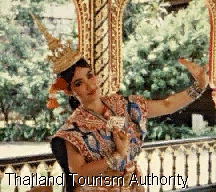
Norodom Sihanouk
Norodom Sihanouk has served, at different times, as Cambodia's king, prime minister, and head of state. In the 1960s he kept Cambodia from becoming involved in the turmoil of neighboring Vietnam, but was ousted from power in 1970 during the Vietnam War. While living in exile in China, Sihanouk formed ties with the Communist Khmer Rouge. He returned to nominal power in 1975, but resigned a year later in protest over the brutality of the Khmer Rouge regime. In 1991 he again came into power and was installed as king in 1993.
REUTERS/BETTMANN [1]
Sihanouk, Norodom (1922- ), king of Cambodia
(1941-1955, 1993- ). He served at various times as prime minister
(intermittently, 1952-1968) and as head of state (1960-1970,
1975-1976, 1991-1993). 
He was born in Phnom Penh on October 31, 1922, and was educated in Paris and Saigon (now Ho Chi Minh City, Vietnam), acquiring a reputation as an international playboy. On the death of his grandfather, King Sisovath Monivong, in 1941, he was put on the throne and gradually became involved in the struggles of his people. In 1953 he went into voluntary exile to protest continued French colonialism in Cambodia, returning only after the French recognized the country's independence in 1954. In 1955 he abdicated in favor of his father, formed a party that won all the seats in the National Assembly, and took charge of the country's affairs.
When his father died in 1960, Sihanouk declined to resume the throne, instead becoming head of state. He skillfully maintained Cambodia's neutrality in the Vietnam War when the forces of both sides violated Cambodian territory. He was ousted by pro-U.S. General Lon Nol in 1970. He then went into exile in China, allied himself with the forces of the Communist Khmer Rouge, and returned with them to Cambodia after their victory in 1975. Installed by the Khmer Rouge regime as the nominal head of state, he resigned in protest against the regime's brutality in 1976 and remained a virtual prisoner. He was allowed out of the country in 1979 to plead Cambodia's case before the United Nations against the puppet government installed in Cambodia by the Vietnamese. He then went into exile again, first in China and then in North Korea. In 1982 Sihanouk formed a common front with the Khmer Rouge and other groups to resist the Vietnamese occupation of Cambodia. In 1991 Sihanouk became president of the Supreme National Council, a transitional body established by peace treaty to help govern Cambodia. After an inconclusive election in June 1993, he brokered an agreement for leaders of the two main parties to share power. After the Cambodian parliament voted to restore Sihanouk to the throne, he was installed as king on September 24, 1993. [2]
[1]"Norodom Sihanouk," Microsoft® Encarta® 96 Encyclopedia. © 1993-1995 Microsoft Corporation. All rights reserved.
[2]"Sihanouk, Norodom," Microsoft® Encarta® 96 Encyclopedia. © 1993-1995 Microsoft Corporation. All rights reserved. © Funk & Wagnalls Corporation. All rights reserved.